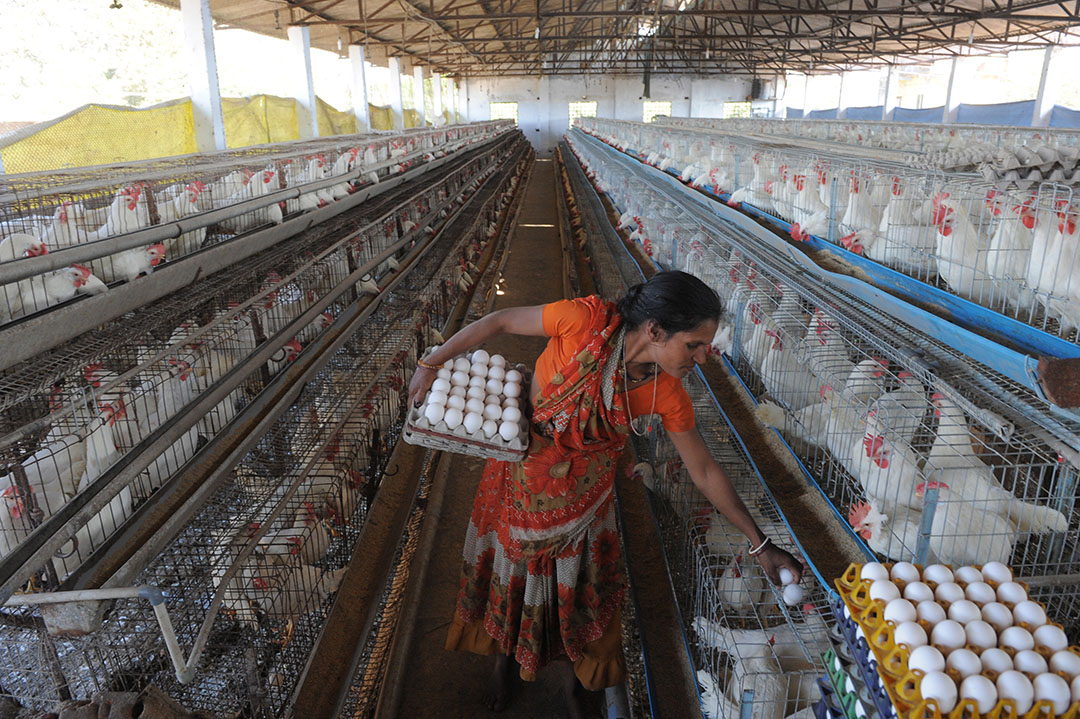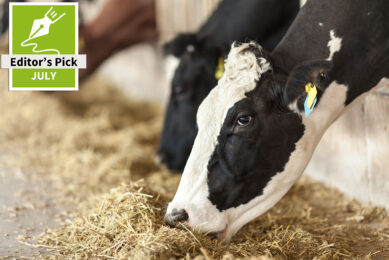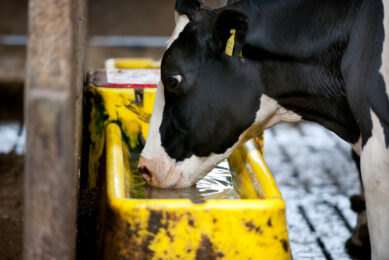Impact of heat stress: Production vs adaptation

Livestock animals possess several adaptive mechanisms to cope with heat stress challenges, but these mechanisms only help animals survive the stress by compromising the productive responses. Here, the adaptive abilities of animals to heat stress, which improves their performance in harsh climatic conditions, are examined.
Climate change associated heat stress is the most significant factor which negatively influences animal production. This can cause a severe economic burden to livestock farmers who rely heavily on these animal populations for securing their livelihoods. Therefore, in an effort to ensure appropriate economic return from the livestock enterprise the animals need to be genetically sound to counter the environmental challenges and perform optimally. Science has evolved a lot in the last five decades to understand in-depth the hidden intricacies of livestock adaptation to heat stress challenges. Several research efforts were in place employing the advanced molecular biological tools to improve the genetic merit of the livestock to impart them with the ability to survive in harsh environmental conditions.
Multifaceted impact on animals
Heat stress has a multifaceted impact on animal production:
- The first and foremost impact of heat stress is on the growth performance of animals. This could be attributed to the reduced feed intake of heat stressed animals as a mechanism evolved by these animals to reduce the metabolic heat production in an effort to cope with external increased ambient temperature. Ultimately, all the meat production characteristics also get affected resulting in low quantity and quality of meat production.
- By far the most significant impact of heat stress on animal production was recorded in milk production. Heat stress not only affects the quantity and but also the quality of milk by altering its various components. This adverse impact of heat stress on milk production causes a severe economic burden on dairy farmers.
- Another significant adverse impact of heat stress arises on the reproductive efficiency of animals.
- Further, heat stress also compromises the immune system in animals making them susceptible to various disease conditions. The animal compromises its productive efficiency in an effort to support life-sustaining activities during heat stress exposure.
Different adaptive mechanisms of animals
Animals exhibit several adaptive mechanisms in an effort to cope with the adverse environmental conditions. Animals acquire such adaptive potential over several generations. Specie differences were established for adaptive capacity and within species, breed differences was established for adapting to heat stress challenges. Further, native animals were established to be more superior for adapting to adverse heat stress conditions as compared to exotic and cross bred animals. Indigenous animals exhibit an extremely resilient capacity to cope with heat stress.
The morphological adaptation refers to unique physical characteristics which imparts the ability of survival in extremely harsh climatic conditions. For example:
- the long legs of desert animals to avoid the ground radiation
- coat colour with white or lighter colour to reflect solar radiation
- shorter body confirmation especially in the tropical environments
- fat tailed sheep to support the huge energy demand during thermoregulation on exposure to heat stress.
Behavioural adaptation includes:
- shade seeking and avoiding grazing during peak sunshine hours of the day
- increased drinking frequency
- increased water intake
- reduced feed intake
- increased standing time
- reduced lying time
- reduced urination and defecation frequencies in an effort to conserve body water
The physiological adaptive mechanisms include:
- increased respiration rate
- increased pulse rate
- increased rectal temperature and increased skin temperature.
All these vital mechanisms aid the heat stressed animals to dissipate body heat both through respiratory evaporative cooling mechanisms, as well as cutaneous evaporative cooling mechanisms.
The blood biochemical response includes increased packed cell volume and increased haemoglobin concentration, which reflects the severe dehydration nature of the animals. Further, all the biochemical variables such as blood glucose, total protein, total cholesterol, non-esterified fatty acids; free fatty acids; heptaglobin, acid phosphatase, alkaline phosphatase, alanine amino transferase, aspartate amino transferase blood urea and blood urea nitrogen gets altered in animals exposed to heat stress. Both species and breed variations are observed in the alterations of these blood biochemical variables probably displaying their efficiency to generate additional energy through body reserves to support vital body functions to cope with heat stress challenges.

Hormonal responses to heat
The classical adaptive response of the heat stressed animals refers to the endocrine response. Blood cortisol is the principal stress-relieving hormone in ruminant animals and corticosterone in other animals. This is a vital hormone which relieves heat stress by favouring hepatic gluconeogenesis to convert non-carbohydrate sources into glucose to support life-sustaining activities. Other classical endocrine variables reflecting the heat stress in animals are the thyroid hormones. Generally, thyroid hormone levels are lowered in heat stressed animals reflecting the reduced metabolic activities of these animals to prevent additional heat load being generated to cope with environmental heat stress. There are also alterations in other hormones such as aldosterone and anti-diuretic hormone concentrations reflecting the electrolyte imbalance and altered kidney functions respectively to conserve body water as a result of dehydration in heat stressed animals.
Finally, the cellular and molecular responses of adaptation are the crucial mechanisms by which the animals survive during heat stress. The classical cellular changes include alteration in the concentration of heat shock proteins which are molecular chaperons involved in repairing of damaged protein and degenerative changes in the cells. Further, there are variations in the classical thermo-tolerant gene expression patterns reflecting their adaptive potential. The cellular and molecular response yields confirmatory biological markers for quantifying heat stress responses in animals.
Advancements in response quantification
It is essential to quantify the heat stress response of animals. This can help to identify the sensitive animals and can be subjected for ameliorating the adverse heat stress impact through strategical interventions. Rectal temperature was established as being a reliable indicator to quantify heat stress response. However, it is an invasive methodology and may not be the true representative to indicate core body temperature. Therefore, researchers around the globe are targeting identifying new methodologies to record core body temperature using advanced technologies. Rumen bolus is making great progress in establishing the core body temperature. This is a radio frequency identification (RFID) based methodology which can help to record the body temperature throughout the lifetime of an animal without any invasive procedure. Another notable technology is the application of infrared thermography which is used to record body surface temperature. This technique in particular is making great progress because of its easy to use procedure and the quantum data it can provide to assess the thermal balance in heat stressed animals.
Heat stress is a significant factor which negatively influences animal production. It affects almost all productive responses of animal including growth, reproduction, milk and meat production as well as immune status. This can create huge economic consequences for the poor and marginal farmers whose primary livelihood depends of these animal resources. Advanced methodologies can help the farming community to identify the heat stressed animals to apply intervention strategies to ameliorate the conditions. These efforts can ensure sustaining animal production in the changing climate scenario.







